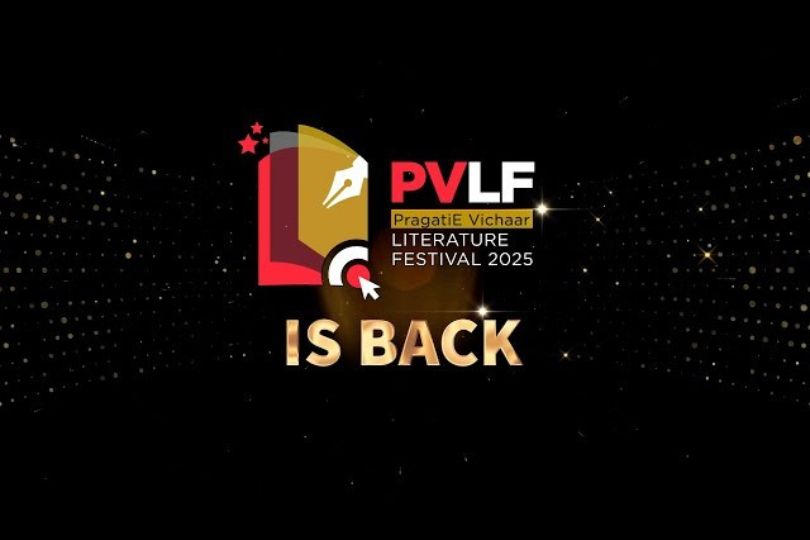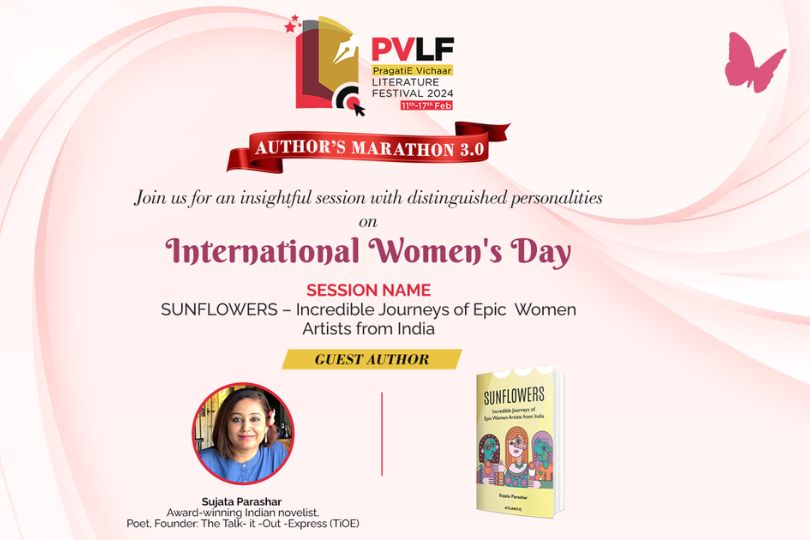Frontlist | Essay: The importance of Lawrence Ferlinghetti
Frontlist | Essay: The importance of Lawrence Ferlinghettion Mar 03, 2021

The courtroom drama around Lawrence Ferlinghetti’s publication of Alan Ginsberg’s Howl (1956), that focussed on the defence of free expression, provides a case study for contemporary writers, filmmakers, and stand-up comedians in other parts of the world facing censorship
Lawrence Ferlinghetti (1919-2021) wrote, painted, taught, sold books, and became one of the most vocal critics of war in the United States of America. However, his calling card to literary renown is the fact that he published Allen Ginsberg (1926-1997) – a poet who acquired cult status for his book Howl and Other Poems (1956). When Ferlinghetti died in San Francisco on February 22 at the age of 101, this singular achievement was highlighted in almost every tearful obituary celebrating his contributions to American literature.
What was so remarkable about that poem? In his book American Scream: Allen Ginsberg’s Howl and the Making of the Beat Generation (2004), Jonah Raskin writes, “Howl was underground poetry, outlawed poetry. Ginsberg made it seem as though it was cool to be a teen and that teens, not adults, knew what was cool. It bound us together and gave us a sense of identity as members of a new generation that had come of age in the wake of World War II and the atomic bomb, a generation that lived in the shadow of nuclear apocalypse.”
This testimony from Raskin, who has worked as a journalist and university professor, goes back to 1957 when he was 15 years old. The copy he bought cost him a mere 75 cents. It was a paperback edition brought out by City Lights, a publishing house and bookstore in California run by Ferlinghetti. That was the first book of poetry he ever bought. Raskin went on to study the genesis of the poem, its changing form during Ginsberg’s lifetime, and its back story emerging from revelations made by Ginsberg’s psychiatrist Dr Philip Hicks.
MORE FROM THIS SECTION
The story of that Indian-origin barrister, George Edalji, has now been dug up in detail and brought to life in a new book by London-based historian-author Shrabani Basu
New book uncovers Indian mystery probed by Sherlock Holmes author
On this week’s reading list: a portrayal of the publishing world in India, lessons from the unusual career of a civil servant, and a critique of illiberalism and violence in Indian politics. (HT Team)
HT Picks; New Reads
Author Sharanya Manivannan (Catriona Mitchell)
Interview: Sharanya Manivannan, author, Mermaids in the Moonlight
A farmer ploughs his fields under the relentless sun. (Shutterstock)
Review: Along with the Sun edited by Ki. Rajanarayanan
The story goes that Ginsberg brought his poem to the sessions he had with his psychiatrist, and he worked on it during their time together. It is important to note that Ferlinghetti was struck by Howl not only because of its politics but also its shock value. Ginsberg’s struggle with homosexuality, his fascination with Eastern religions, and his obsession with nudity come together in the poem. It is not only a critique of capitalism and the military-industrial complex but also a reflection of childhood trauma and frictions in his intimate relationships.
Lawrence Ferlinghetti’s City Lights, an independent bookstore-publisher in San Francisco that published Alan Ginsberg’s Howl and other Poems. (Shutterstock)
Lawrence Ferlinghetti’s City Lights, an independent bookstore-publisher in San Francisco that published Alan Ginsberg’s Howl and other Poems. (Shutterstock)
How did Ferlinghetti learn about Howl? He was at the legendary Six Gallery reading, where Ginsberg performed the poem before a spellbound audience. Held on October 7, 1955, this event in San Francisco was curated by counterculture artist Wally Hedrick. It has become an inseparable part of the lore associated with the Beat poets. Ginsberg was reluctant to accept the invitation at first but the New Yorker in him was excited to discover what San Francisco had to offer. He was accompanied by four other poets -- Gary Snyder, Philip Lamantia, Michael McClure and Philip Whalen. Kenneth Rexroth was the emcee for that evening.
According to Raskin, these young men “could hardly be called a school of poets.” What they had in common was an admiration for the poetry of William Carlos Williams, and the fact that “almost all of them were in rebellion against the stodgy academic poetry of the day, with its emphasis on ambiguity, irony, symbolism, and formalism.” They had a profound distaste for materialism in American society, and thought of themselves as “spiritual seekers… willing to take personal risks — to experiment not only with poetry but with politics, drugs, and sex.”
Other famous cultural figures – Jack Kerouac, Peter Orlovsky, Neal Cassady, Natalie Jackson, Ann Charters, David Simpson – were in attendance. Most of them got fairly drunk during the event, and also had an afterparty. Ferlinghetti did not join them for dinner but he sent Ginsberg a telegram the following day. He wrote, “I GREET YOU AT THE BEGINNING OF A GREAT CAREER [stop] WHEN DO I GET MANUSCRIPT OF “HOWL” [stop] LAWRENCE (FERLINGHETTI) CITY LIGHTS BOOKSTORE.” This telegram opens a volume titled I Greet You at the Beginning of A Great Career: The Selected Correspondence of Lawrence Ferlinghetti and Allen Ginsberg 1955-1997 edited by Bill Morgan. It was published in 2015.
The words chosen by Ferlinghetti exemplify his scholarship, his ability to spot talent, and his appreciation of the legacy that Ginsberg would carry on. He was referring to a letter written by poet Ralph Waldo Emerson to another American poet Walt Whitman on 21 July 1855. It stated, “I greet you at the beginning of a great career, which yet must have had a long foreground somewhere, for such a start. I rubbed my eyes a little, to see if this sunbeam were no illusion; but the solid sense of the book is a sober certainty. It has the best merits, namely, of fortifying and encouraging.” Ginsberg was familiar with the exact reference.
The 1856 edition of Whitman’s Leaves of Grass included this letter. Whitman, like Ginsberg, was a gay man. Raskin’s research shows that, when Ginsberg was a high school student, he thought of the book as “great literature” but also considered it “flawed because of the poet’s own homosexuality.” Apparently, Ginsberg warmed up to Whitman as he confronted his own internalized homophobia. He was re-reading Whitman when Ferlinghetti’s telegram arrived. “For a poet who wanted to define himself in opposition to the literary establishment, Whitman was a near perfect poet to adopt as a cultural hero,” says Raskin.
Both Whitman and Ginsberg attended to their spiritual stirrings, in their poetry and outside of it. They felt no need to separate their art from their own personality. Therefore, their work has a confessional aspect. They foreground the self, not caring about the allegation that they are self-indulgent men too occupied with their inner world and so lulled by the comforting presence of faith that they barely address the horrific realities of their times.
Ferlinghetti’s reputation as a publisher owes to his relentless support for Ginsberg’s work. Their relationship was far from being professional in the strict sense of the term. They were friends. Ginsberg frequented Ferlinghetti’s bookstore. Sometimes, they went for walks and also bonded over beer and burgers. Ferlinghetti’s dog Homer used to join them. When Howl got embroiled in legal trouble for its sexually explicit content, Ferlinghetti did not chicken out. He stood up courageously for Ginsberg, whose work he was proud to have published.
Ronald KL Collins and David M Skover’s book The People v Ferlinghetti: The Fight to Publish Allen Ginsberg’s “Howl” (2019) offers a detailed account. A few months after Ferlinghetti offered to publish Howl, he began to wonder about his plan of action in case the government chose to impose censorship. He was a sharp businessman, and wanted to take calculated risks. There was no money to hire a lawyer, so he contacted the Northern American Chapter of the American Civil Liberties Union. They agreed to defend him if the need arose.
Ginsberg, with his love for self-promotion, was keeping his fingers crossed for free publicity. This tendency was known to Ferlinghetti. The huge turnout at the Six Gallery reading was made possible by Ginsberg’s flair for networking. Collins and Skover mention that Ginsberg stepped in to help Ferlinghetti create a buzz around the book. He came up with a list of luminaries who would receive complimentary copies. It included Charlie Chaplin, Marlon Brando, WH Auden, TS Eliot and Ezra Pound. Their praise would help sell more copies.
What was the legal mess that the book got into? News reports from that time, letters to the editor from the reading public in California, op-ed pieces written by Ginsberg and Ferlinghetti, commentaries by various people, and transcripts of the trial testimony are available in a book called Howl on Trial: The Battle for Free Expression (2006) edited by Bill Morgan and Nancy J Peters. It would make a fascinating case study for writers, artists and filmmakers and stand-up comedians in other parts of the world facing censorship.
A commemorative plaque in San Franscisco for the 50th anniversary of the first reading of beat poet Allen Ginsberg’s “Howl”. (Shutterstock)
A commemorative plaque in San Franscisco for the 50th anniversary of the first reading of beat poet Allen Ginsberg’s “Howl”. (Shutterstock)
The book reveals that the Collector of Customs, Chester MacPhee, confiscated 520 copies of the book, with this explanation: “The words and the sense of the writing is obscene…you wouldn’t want your children to come across it.” Ferlinghetti had arranged for the books to be printed in London, and shipped to the US. The shipment was, by no stretch of the imagination, meant for a school library. It carried books meant to be read by adults. ACLU notified MacPhee that they would defend Howl. The US Attorney decided not to proceed with the matter. MacPhee was compelled to release the books he had confiscated.
Ginsberg was in Morocco working on William S Burroughs’s draft of the novel Naked Lunch. He conveyed his regrets about the financial loss but also convinced Ferlinghetti that the publicity was good. Raskin’s book reminds us that, after the obstacles posed by MacPhee had been dealt with, “the San Francisco police leapt into the fray.” He writes, “On May 21, 1957, two police officers, Russell Woods and Thomas Pagee, entered City Lights, bought a copy of Howl from Shigeyoshi Murao — the store’s clerk and mainstay… and obtained a warrant for his and Ferlinghetti’s arrest.” Murao was bailed out by ACLU. Ferlinghetti was out of town.
Kerouac wrote to Ginsberg, expressing his fear that the US was going in the direction of becoming a police state like Germany. The cops had sprung into action thanks to the overzealous William A Hanrahan, the Captain of the Juvenile Department of the San Francisco Police. Since MacPhee was not able to protect children from the obscenities in Ginsberg’s book, Hanrahan wanted to do the honours. Eventually, the case was heard by Judge Clayton Horn who “taught Bible class in Sunday school at his local church” but also believed “unequivocally in the First Amendment.”
The courtroom drama inspired prominent intellectuals, professors and writers in the Bay Area to engage in a robust public dialogue. The judge used his position responsibly, and argued that a society’s definition of obscenity is not static. It depends on “the locale, the time the mind of the community and the prevailing mores.” His judgement does not indulge hurt sentiments or prudish thinking. According to him, words must be protected if they have “the slightest redeeming social importance.” What a timely lesson for us in India!
Read More: Excerpt: Born a Muslim by Ghazala Wahab
Source: Hindustan Times
Author
Authors
Bestseller
Book
book news
Frontlist India news
Frontlist Latest news
Frontlist News
Lawrence Ferlinghetti



.jpg)






.jpg)
.png)
.jpg)
.jpg)
.jpg)
.jpg)
.jpg)
.jpg)










Sorry! No comment found for this post.